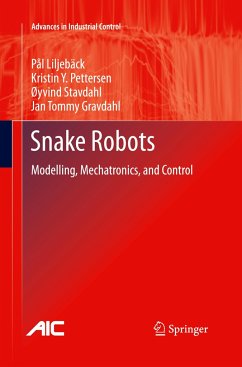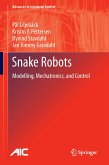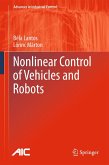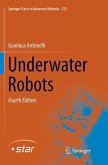Snake Robots is a novel treatment of theoretical and practical topics related to snake robots: robotic mechanisms designed to move like biological snakes and able to operate in challenging environments in which human presence is either undesirable or impossible. Future applications of such robots include search and rescue, inspection and maintenance, and subsea operations. Locomotion in unstructured environments is a focus for this book.
The text targets the disparate muddle of approaches to modelling, development and control of snake robots in current literature, giving a unified presentation of recent research results on snake robot locomotion to increase the reader's basic understanding of these mechanisms and their motion dynamics and clarify the state of the art in the field. The book is a complete treatment of snake robotics, with topics ranging from mathematical modelling techniques, through mechatronic design and implementation, to control design strategies. The development of two snake robots is described and both are used to provide experimental validation of many of the theoretical results.
Snake Robots is written in a clear and easily understandable manner which makes the material accessible by specialists in the field and non-experts alike. Numerous illustrative figures and images help readers to visualize the material. The book is particularly useful to new researchers taking on a topic related to snake robots because it provides an extensive overview of the snake robot literature and also represents a suitable starting point for research in this area.
The text targets the disparate muddle of approaches to modelling, development and control of snake robots in current literature, giving a unified presentation of recent research results on snake robot locomotion to increase the reader's basic understanding of these mechanisms and their motion dynamics and clarify the state of the art in the field. The book is a complete treatment of snake robotics, with topics ranging from mathematical modelling techniques, through mechatronic design and implementation, to control design strategies. The development of two snake robots is described and both are used to provide experimental validation of many of the theoretical results.
Snake Robots is written in a clear and easily understandable manner which makes the material accessible by specialists in the field and non-experts alike. Numerous illustrative figures and images help readers to visualize the material. The book is particularly useful to new researchers taking on a topic related to snake robots because it provides an extensive overview of the snake robot literature and also represents a suitable starting point for research in this area.
From the book reviews:
"The monograph presents also the author's own research and development in the field, which cover the full spectrum of mathematical modeling control design simulation studies and experimental demonstrator prototypes. ... the intended audience for the present book consists of graduate students, Ph.D. students and scientists with an interest in robotics and control, specially in control and technology of snake robots or underactuated systems in general." (Clementina Mladenova, zbMATH, Vol. 1291, 2014)
"Although the first snake robot dates back to 1972 ... robotics courses rarely mention them. In light of this, Snake robots constitutes a clarifying and stimulating starting point. ... The authors' own research is presented in this book, and their insights enable the reader to understand the behind-the-scenes work on snake robot projects. This aspect of the book is very helpful for researchers. This book has a clear structure and can be easily followed, making it appropriate for teaching purposes." (Ramon Gonzalez Sanchez, ACM Computing Reviews, October, 2012)
"The monograph presents also the author's own research and development in the field, which cover the full spectrum of mathematical modeling control design simulation studies and experimental demonstrator prototypes. ... the intended audience for the present book consists of graduate students, Ph.D. students and scientists with an interest in robotics and control, specially in control and technology of snake robots or underactuated systems in general." (Clementina Mladenova, zbMATH, Vol. 1291, 2014)
"Although the first snake robot dates back to 1972 ... robotics courses rarely mention them. In light of this, Snake robots constitutes a clarifying and stimulating starting point. ... The authors' own research is presented in this book, and their insights enable the reader to understand the behind-the-scenes work on snake robot projects. This aspect of the book is very helpful for researchers. This book has a clear structure and can be easily followed, making it appropriate for teaching purposes." (Ramon Gonzalez Sanchez, ACM Computing Reviews, October, 2012)








